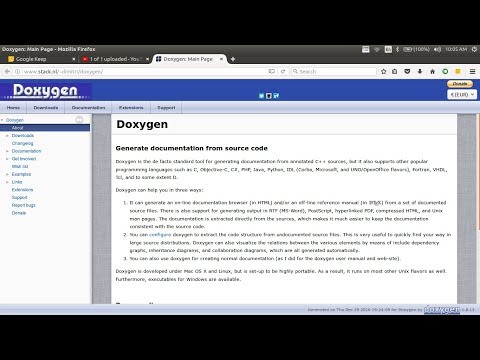

You can post questions and comments in the Graphviz forum. It can help you in three ways: It can generate an on-line documentation browser (in HTML) and/or an off-line reference manual (in ) from a set of documented source files.

The current release of Graphviz can be downloaded here: Downloadĭocumentation is available in the released package and from here: Documentation Discussions Doxygen is a documentation system for C++, C, Java, IDL (Corba and Microsoft flavors) and to some extent PHP and C. Graphviz has many useful features for concrete diagrams, such as options for colors, fonts, tabular node layouts, line styles, hyperlinks, and custom shapes. Doxygen runs on most Unix-like systems, macOS, and Windows.
DOXYGEN MANUAL PDF
The Graphviz layout programs take descriptions of graphs in a simple text language, and make diagrams in useful formats, such as images and SVG for web pages PDF or Postscript for inclusion in other documents or display in an interactive graph browser. It has important applications in networking, bioinformatics, software engineering, database and web design, machine learning, and in visual interfaces for other technical domains. Graph visualization is a way of representing structural information as diagrams of abstract graphs and networks. By using the command \ref inside the URL value you can conveniently link to an item inside doxygen. The nodes of a graph can be made clickable by using the URL attribute. This is a self-installing archive that includes the HTML and compressed HTML versions of the manual and the GUI frontend. The example is available on GitHub, and I will also include references to different sections of the Doxygen manual and documentation. Doxygen is a documentation system for C++, C, Java, Objective-C, IDL (Corba and Microsoft flavors), Fortran, Python, VHDL and to some extent PHP, C, and D. Graphviz is open source graph visualization software. Doxygen will pass the text on to dot and include the resulting image (and image map) into the output. The C++ example project below will illustrate how the source code is commented and how the documentation is generated from it.


 0 kommentar(er)
0 kommentar(er)
